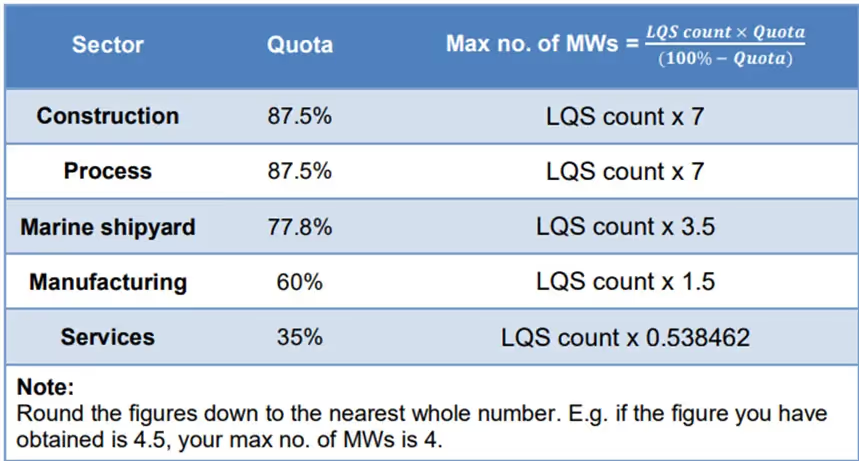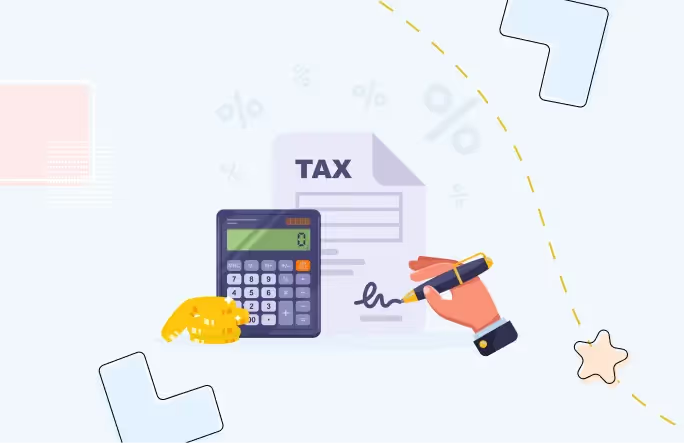What is the foreign worker levy?
The foreign worker levy is a pricing system that aims to regulate the number of foreign workers in Singapore. Employers need to pay a monthly levy for hiring work permit holders. The levy period lasts from the day the permit is issued till the day it ends.
As the Ministry of Manpower, a Singapore Government agency, describes, a foreign worker levy is a pricing mechanism that regulates the number of foreign citizens working in Singapore.
Employers of migrant workers or migrant domestic workers (MDWs) must pay a monthly foreign worker levy for each Work Permit holder they employ. The levy rate for foreign workers in Singapore depends on the sector in which the employing company operates.
For example:
Construction: The levy is determined by the foreign worker's qualifications and skills and is charged based on whether the foreign worker is higher-skilled or basic-skilled. The levy rate ranges from S$300 to S$950 per month, depending on the worker's skill level.
Marine Shipyard: The levy rate ranges from S$300 to S$400 per month, depending on the worker's skill level.
Manufacturing: For workers in the manufacturing sector, the levy ranges from S$370 to S$650 per month, depending on the skillset.
Process: For employees in the process sector, including plants in the manufacturing of petroleum and petrochemical, the levy ranges from S$300 to S$750.
Service: To employ migrant workers in the service sector, employers must pay a foreign worker levy, ranging from S$450 to S$800, depending on the worker's skill set.
Read more: Remote Alternatives
How to calculate the foreign worker levy rate?
The foreign worker levy rate in Singapore is calculated based on the sector in which the employing company operates, the foreign worker's qualifications, and skills.
The monthly levy rates for different sectors are determined by the Ministry of Manpower (MOM). The daily levy rate applies if the work permit holder is not employed for an entire calendar month.
Here are the 6 steps to calculating foreign worker levy bill.
Step 1: Calculate the maximum migrant workers (MWs) you can hire.
To calculate the number of maximum migrant workers (WP and S Pass holders) use the following formula:
Max no. of MW = LQS count x Quota (100% - Quota)
Here,
- LQS count is calculated on the average of three months’ declared salaries and CPF contributions.
- Quota is based on the industry a company operates in.

Step 2: Calculate your total workforce
Total workforce = LQS count + WP holders + S Pass holders
For instance, if your LQS count is 20 and you have 10 WP holders, your total workforce will be 30.
Note – In-Principle Approvals or IPA holders whose work permits have not been issued must not be counted in total workforce.
Step 3: Calculate the number of S Pass holders you can hire
The S Pass quota for services sector is 10% and 15% for the other sectors. This refers to the percentage of your total workforce that can be S Pass holders. Note that, the number of S pass holders is counted within your total foreign workers (FWs) quota, that is, max number of FWs.
Step 4: Calculate the number of PRC WP holders you can hire
** Follow this step if you in the manufacturing and services sector
The WP quota for workers from the People’s Republic of China (PRC) for the manufacturing and services sectors is:

Step 5: Calculate the number of FWs under each levy tier
** Follow this step if you in the manufacturing and services sector
Here’s a table to calculate the number of FWs under each levy tier.

Note – No levy tiers exist for the construction, process and marine shipyard sectors.
Step 6: Calculate your levy bill
To calculate your levy bill, multiply the number of workers in each tier by the levy rate.

The two factors determining foreign worker levy
A foreign worker levy is determined by two factors, the worker's qualifications and the number of work permit or S pass holders that the employer has already hired. Let's take a look at them.
The worker's qualifications
The levy rate is charged based on whether the foreign worker is higher-skilled or basic-skilled.
The specific requirements for the higher-skilled worker levy vary by sector. Upgrading your worker to a higher skilled status will reduce the levy for the employer. Here are some industry-specific examples:
Levy amount for the construction sector across various skill levels:
Manufacturing sector levy are tiered, based on the worker’s skills and experience.
Read more: Contractor vs Contingent worker
How many employees were hired with Work Permit or S Pass holders?
Apart from the worker's skill level, the foreign worker levy is also determined by how many workers the employer has hired with work permits or S Pass holders.
The S pass is given to skilled workers who earn a minimum of S$3000 a month, while the work permit is for migrant workers who are semi-skilled in the construction, manufacturing, marine shipward, process, or service industries.
As MOM mentions, "Under the existing quota, the number of S Pass holders your company can hire is capped at:
- 10% of the company's total workforce is in the services sector.
- 15% in the construction, manufacturing, marine shipyard, and process sectors.
For the services sector, the levy rate is as follows:
For all other sectors, the levy rate is as follows:
Foreign worker levy rebate
If your global compensation strategy includes paying foreign employees, you may seek foreign worker levy rebate under certain situations. You can apply for the levy rebate only when the levy has been charged, and it has to be within one year of the levy bill.
Conclusion
Singaporean employers need to adhere to several complicated foreign worker levy related regulations when hiring remotely. Collaborating with an EOR is a great way to stay compliant with all the legalities, and you may also skip paying the foreign worker levy in Singapore.
Gloroots not only helps employers with various liabilities but also maintains transparency through reporting. Gloroots’ Excel reports provide you visibility into details, like,
- tax deductions,
- social security contributions,
- FX fees,
- FX rates used in transactions, etc.
Additionally, Gloroots partners with payment providers who specialize in cross-border payments. As a result, the employer can make only one payment for all employees in the home currency to EOR, and we ensure handling the multi-currency payments to employees. We also ensure optimal exchange rates for employers and timely payments to all employees across countries.
Book a call today to explore collaboration opportunities.
FAQs
What is meant by payroll levy?
Payroll levy means the levy (amount of money) imposed by the Payroll Levy Act. It includes any additional levy paid under section 7 of the Payroll Levy Collection Act.
What are the types of foreign worker levies?
The different types of foreign worker levy are:
Quota levy - This is fine employers pay when the number of foreign workers they’ve hired exceeds a quota set by the government.
Sector-specific levy - These levies are for sectors that rely on foreign labor, like construction, manufacturing, and hospitality.
Work permit levy - A fee paid for each foreign employee that covers the cost of work permit processing.
Time-based levy - This fee is calculated based on the period in which the foreign worker has been under employment.

.webp)




























.webp)


























.webp)


.webp)


.webp)












